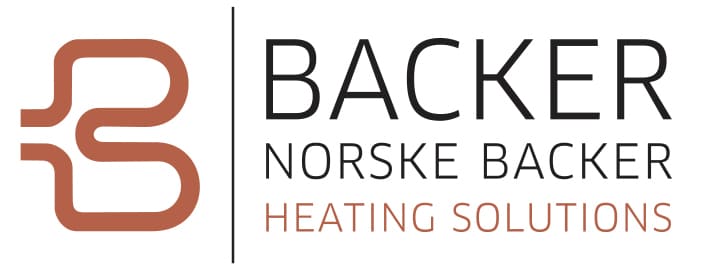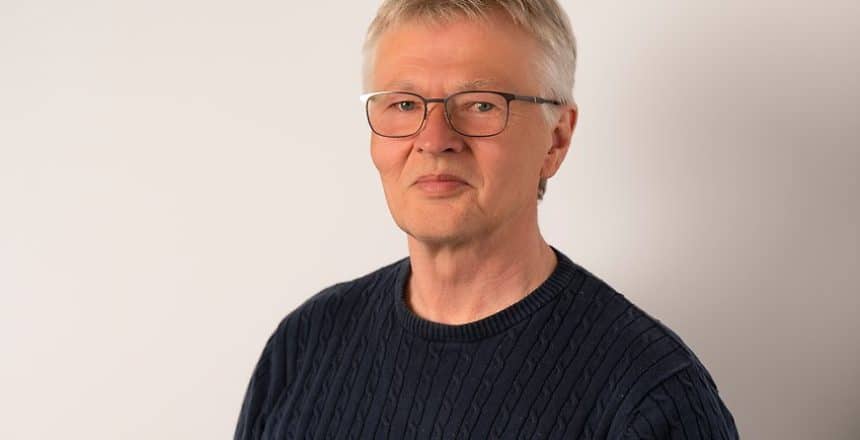There are no assembly lines or modern production lines at the Norske Backer AS factory in Kongsvinger. For production manager Uno Rybråten and his colleagues, it's all about individual adaptations and small batches.
- We don't have robots or assembly lines here. Our production is not suited to that. Many of the machines have remained virtually unchanged since we started producing elements in the 1930s. Almost everything we make here at the factory is handcrafted and customized. We produce series of up to 500 units, but most of our large-scale production takes place at our sister factory in Poland," says Uno Rybråten.
2,300 square meters of bright premises
It's remarkably clean and tidy in the large, but clear and bright factory hall. It's calm, well-organized and nowhere near as noisy as you'd expect in a production facility where metal of different types and dimensions is bent, cut, sliced and processed in other ways. No one is running, no one is shouting, and there is no no noisy transportation between the various stations.
- "Uno Rybråten knows every square inch of the 2,300 square meter facility and every one of the 30 men and women who work here."
He has been plant manager here since Norske Backer AS moved its production facility here in 2008 and for many years before that.
- In total, we have 13 stations here inside the factory premises, including those that pack and prepare the products for shipment.
Grew out of the premises
This year marks the 100th anniversary of Flisa man Christian Backer's invention of heating elements. Today, his invention is used all over the world, both in private homes and in industry, and his unique invention has been named the Backer process. His patent is used, among other things, as a heating solution in the process industry and for oil and water heating. Norske Backer in Kongsvinger was established in 1969, in the building that today houses the Coop Extra grocery store. Both administration and production were located there for almost 40 years, before eventually outgrowing the premises.
- "When I started in 1980, we were mainly involved in mass production of elements for household items and panel heaters for the private market. I took over as factory manager in the early 1990s, and that's when we started producing elements for water heaters and other parts of the corporate and institutional market," says Rybråten.
Difficult to automate
In 2008, Norske Backer AS moved its factory in Kongsvinger to larger and more practical premises in the SIVA industrial area. At the same time, all volume production was moved to the sister factory Backer OBR in Poland.
- "Ninety percent of what we produce here at the factory are customized heating elements."
"We have many different material qualities and dimensions that need to be adapted in relation to the medium in which it will be used. This is craft production that is difficult to automate. Some attempts have been made over the years to streamline production, but for the most part we've fallen back on the old, tried and tested production methods," says Rybråten, who explains that the largest product they've made at the factory was a heating system ordered for a mine in Siberia.
Most of what we produce has solid dimensions. Far less than half of our production can be packed in cardboard.
The mechanical workshop
A few dozen meters from the factory, on the other side of the courtyard and the road, is the mechanical workshop of Norske Backer AS, which is also part of Uno Rybråten's area of responsibility. This is where the applications and flanges needed for the heating elements are made, as well as steel products that have nothing to do with heating element production. Some of what is cut, welded and customized here will be used at the main airport at Gardermoen, which has been an important customer for a number of years.
At the back of the workshop is a large machine known as a finishing machine. It is in the process of being restored and adapted, and will eventually be put to good use in the element factory.
- "Much of the machinery and equipment we use is self-produced."
"Over the years, we've also acquired a number of element factories in Norway that have been closed down, moved here and reassembled here at the factory," says Rybråten.
- We are fairly self-sufficient in the raw materials we use in element production.

